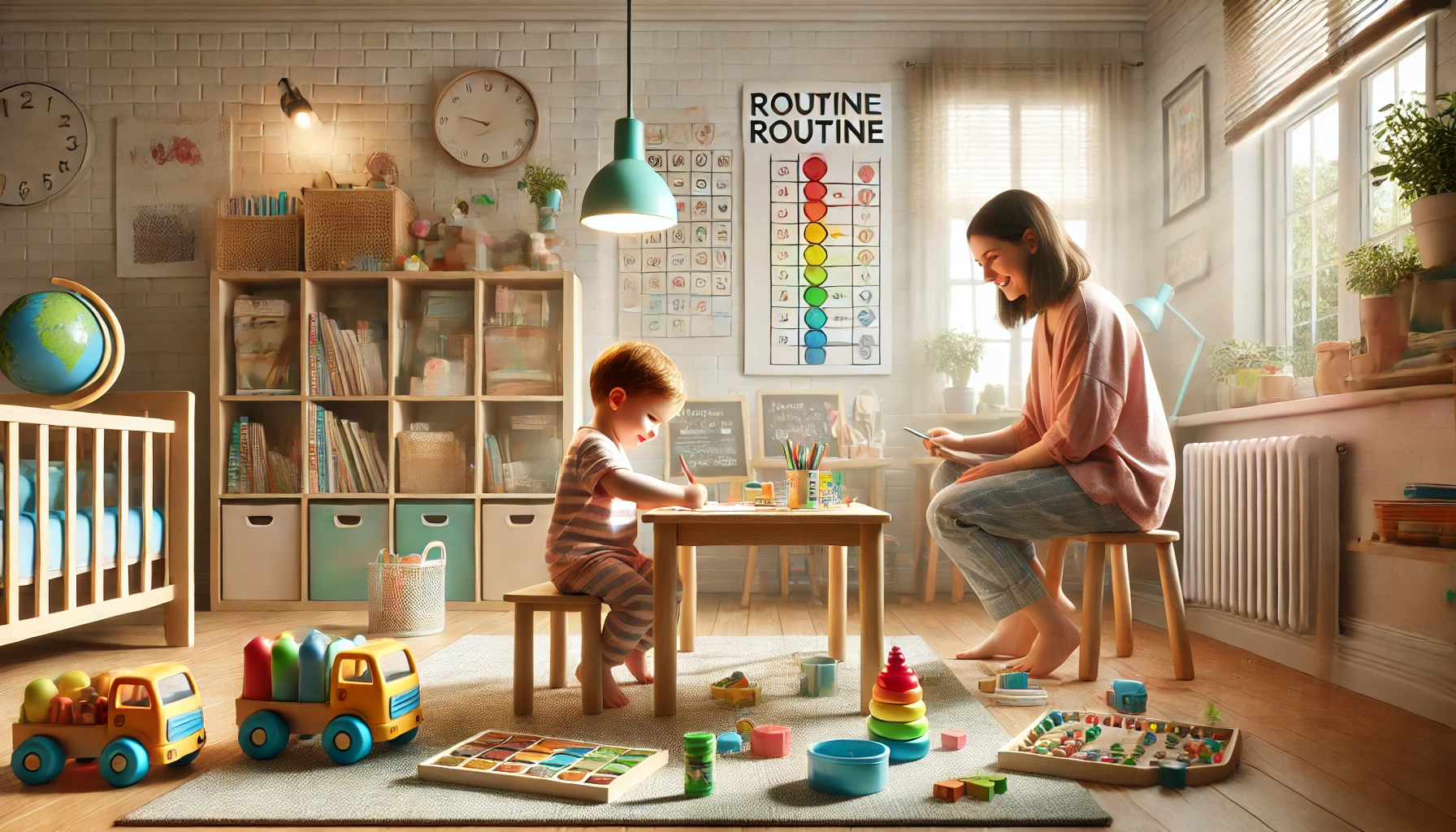Creating a structured, enjoyable, and educational daily routine for your child at home can significantly improve their development and well-being. Children thrive when they have a sense of predictability and purpose throughout the day. A balanced routine encourages learning, supports emotional growth, and helps the entire household run more smoothly.
Let’s explore how to build a daily routine that keeps your child learning, active, and happy—while also giving you peace of mind.
Why a Daily Routine Matters
Before diving into the steps, it’s important to understand the benefits of a routine in early childhood:
- Provides structure and security
- Promotes independence and confidence
- Encourages healthy habits
- Supports better sleep and emotional regulation
- Allows for more consistent learning opportunities
The goal isn’t to create a rigid schedule, but to introduce rhythm and flow to your child’s day. The routine should be predictable, but also flexible enough to accommodate spontaneous play and rest.
Key Elements of a Balanced Routine
A great routine includes a mix of the following components:
- Free Play
- Educational Activities
- Physical Activity
- Creative Time
- Rest or Quiet Time
- Meals and Snacks
- Quality Time with Family
Here’s how you can blend these elements into a fun and productive daily routine.
Morning Routine: Start with Connection and Energy
Start the day with simple steps that help your child feel grounded:
- Wake up at the same time each day
- Brush teeth and get dressed together
- Have a healthy breakfast while chatting or listening to soft music
Then, move into a short mindfulness or movement activity—like stretching or a mini dance party. This helps your child release energy and prepare for focused learning.
Mid-Morning: Educational Play and Skill Building
This is usually the best time for activities that require focus, such as:
- Learning letters and numbers
- Simple science experiments
- Storytime with follow-up questions
- Puzzle solving or logic games
Tips:
- Keep sessions short (10–20 minutes for younger children).
- Alternate between quiet and hands-on tasks.
- Follow your child’s interests to maintain engagement.
Late Morning: Creative Time
Encourage your child’s imagination and expression with:
- Arts and crafts
- Drawing and coloring
- Music and instruments
- Pretend play (e.g., playing “school” or “restaurant”)
Creative activities enhance problem-solving, storytelling, and emotional development.
Lunch and Midday Break
Lunchtime is more than just food—it’s a chance to unwind and connect. Let your child help with simple meal prep tasks to promote independence and teach life skills.
After lunch, a quiet time helps reset their energy levels. This could include:
- Looking at picture books
- Listening to soft music
- Lying down with a favorite stuffed animal
If your child still naps, keep this time consistent.
Afternoon: Outdoor or Physical Activity
If possible, go outside for fresh air and movement. Activities may include:
- A walk or nature hunt
- Playing with a ball or jumping rope
- Running games like tag
- Indoor movement games if space is limited
Physical activity supports brain development and emotional regulation.
Late Afternoon: Choice Time or Life Skills
Allow some unstructured play or introduce simple chores:
- Organizing toys
- Watering plants
- Helping set the table
This builds confidence and a sense of responsibility.
Evening Routine: Wind Down and Reflect
A calming evening routine helps your child transition smoothly to bedtime:
- Dinner as a family – talk about the best parts of the day
- Bathtime and pajamas
- Storytime or guided meditation
- Lights out at a consistent bedtime
Avoid screen time at least 30 minutes before bed to encourage better sleep.
Sample Daily Routine Chart
Here’s a simple routine outline for inspiration:
| Time | Activity |
|---|---|
| 7:30 AM | Wake up and morning routine |
| 8:00 AM | Breakfast |
| 8:30 AM | Educational activities |
| 9:30 AM | Creative time |
| 10:30 AM | Snack and free play |
| 11:00 AM | Outdoor play |
| 12:00 PM | Lunch |
| 12:30 PM | Quiet time or nap |
| 2:00 PM | Reading and storytelling |
| 2:30 PM | Sensory or hands-on play |
| 3:30 PM | Snack and cleanup |
| 4:00 PM | Movement games or life skills |
| 5:00 PM | Free play |
| 6:00 PM | Dinner |
| 6:30 PM | Bath and bedtime routine |
| 7:30 PM | Story and lights out |
Adjust according to your child’s age, needs, and family lifestyle.
Final Thoughts: Consistency Brings Confidence
Creating a daily routine isn’t about strict schedules—it’s about creating a rhythm that helps your child feel secure and supported while learning through everyday moments.
The most effective routines are ones that are realistic, flexible, and filled with love and encouragement. As your child grows, involve them in shaping the routine to give them a sense of ownership.
Consistency doesn’t mean perfection. Some days will flow, others will wobble. What matters is showing up, being present, and turning daily life into meaningful learning opportunities.
